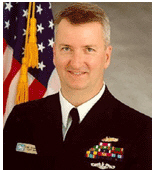Strong Angel III: Disaster response innovation


The scenario for the test and demonstration, which will be hosted by San Diego State University and take place in San Diego August 21-26, involves a global pandemic in combination with cyber attacks that are disabling communications throughout the United States. Below is the full description of the scenario:
In August of 2006 many countries in the world find themselves in the grip of a lethal pandemic. Despite an historical recognition of limited quarantine effectiveness, many areas in the US, like most urban centers across the globe, are under quarantine, enforced by the National Guard, and movement is highly restricted. As the virus spreads, regional hospitals and clinics are rapidly overwhelmed and alternate care sites appear anywhere they can, perhaps in nursing homes, schools, and stadiums. As the weeks drag on and workers manning public utilities fall ill, critical infrastructure begins to falter.
As the scenario unfolds, public health officials soon express urgent concern that a loss of their own regional communications system would have a significant impact since they would be unable to effectively coordinate disease containment and resource allocation. The city seeks help from the national capitol, but the central government is occupied with both the national crisis and with local outbreaks that have placed the central government itself in isolation. The city is told that they must ride out the initial phase alone.
None of this escapes the notice of disruptive organizations. Such groups have long understood that it is possible to do a great deal of harm by watching for (or triggering) an initial event, and then using a secondary attack against responders in order to amplify the morbidity of the original event. Well-versed in techniques of information warfare, they launch a series of cyber-attacks spread out over the course of several hours, targeting critical infrastructure at vulnerable nodes. Grid power is lost for the entire region and, with it, most Internet access. Restoration of services is hampered by illness, quarantine, and confusion. The local community, along with those military personnel deployed to enforce the quarantine, is faced with mounting their own response to these very difficult circumstances.
The ensuing challenge for local governments is to provide humanitarian relief without an established telecommunications infrastructure. As the scenario unfolds during the six-day event, the team will perform tasks, including 40 pre-defined experiments, and explore solutions, some of which were gleaned from from Iraq, the South Asian tsunami response and Hurricane Katrina response efforts. The desired result is expressed by the Strong Angel III team as improving "the resilience of a community anywhere in the world that finds itself under multiple pressures and with little outside support."
Strong Angel III, which will cost less than $250,000, was sponsored by a partnership of civil and military organizations. Major sponsors and event participants for Strong Angel III include Cisco Systems, Google, Microsoft, Sprint Nextel, Save the Children, the Naval Postgraduate School, the U.S. Department of Defense and CommsFirst. The first Strong Angel was held in 2000 in Hawaii, and addressed issues seen in the international response to refugee migration in Kosovo. In 2004, Strong Angel II was also held in Hawaii and dealt with problems related to civil-military integration during disasters and global conflicts.